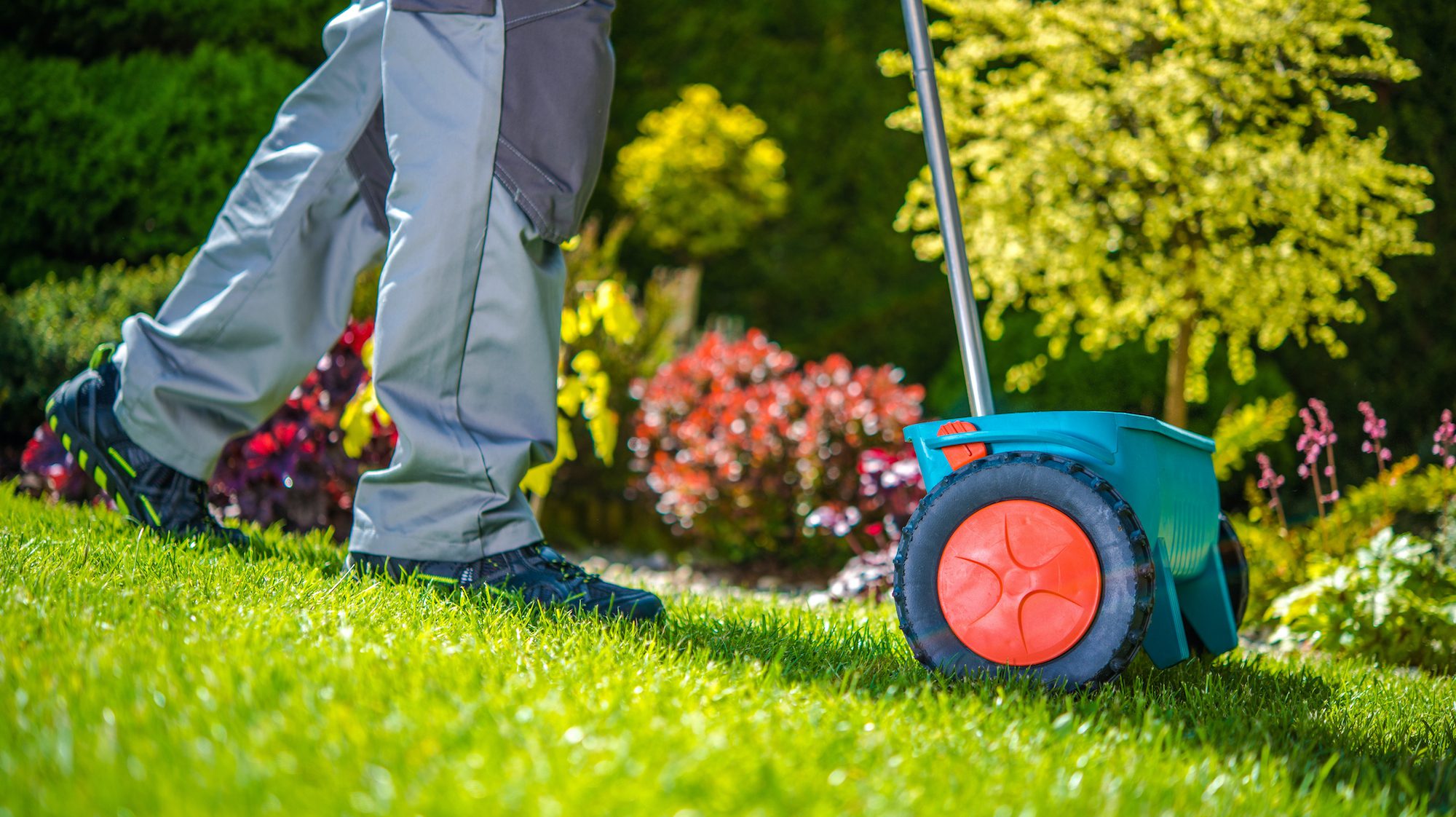
Getty Images
The sun is shining, the birds are chirping, the trees are leafing out, and your yard is, well, kind of greening up. But it’s also mostly patchy brown.
It’s no wonder, as winter—and its accompanying snow, ice, and whiplash temperatures—beats up on those slices of backyard heaven.
The good news is, brown grass doesn’t always equal dead grass. And spring is the absolute best time of year to revive all of your turf with a few easy steps.
“The temperatures are cool enough for the seed to germinate, and performing upkeep before June will put you in good shape,” says Bryan Clayton, CEO of GreenPal.
Here’s what to do for your yard to make sure it’s summer-ready (and that your maintenance will be even easier the following year).
1. Figure out if your grass is alive
Once the winter’s snow and ice melt, the first thing to do is check whether your lawn has actually survived. Simply pull on any sections that look iffy.
“If you’re met with resistance, the roots are hanging in there and your grass is still alive,” says Ryan Smith, a gardening expert and owner of Ant and Garden Organic Pest Control in Beaverton, OR.
The brown areas simply need more time to revive from the cold and should perk up soon.
But if the brown grass pulls out from the earth easily, it’s dead. Those alternating winter freezes and thaws can turn turf roots brittle. And note that if you live on a street that’s plowed, road salt also kills grass.
Use a spade to cut out dead areas of turf, pull out all of the discolored grass by hand or with a spade, and gently rake up the debris.
2. Reseed where needed
Once you’ve cleared your ground, it’s time to reseed any bare spots.
“Since you’re starting from scratch, buy the highest-quality grass seed you can afford,” says Erinn Witz, co-founder of SeedsandSpades.com, an educational gardening website. “And make sure to choose a variety suitable for your region.”
Another bonus to buying proper seed: It can help reduce the number of weeds this summer, and help you avoid dead patches next winter.
The best time to sow your seeds is when the average daily temperature reaches roughly 55 degrees Fahrenheit or above. Generously apply the grass seed to your yard, rake it gently into the soil, and water lightly until you see new blades emerging.
3. Water regularly
“Water is the most important thing your lawn needs to revive after being dead for the whole winter season,” says Jill Sandy, a gardener and founder of home and gardening blog ConstantDelights.com.
Just be careful not to flood the lawn with water, as it will wash off some of the soil from the upper layer. Instead, lightly mist your lawn in the morning every day for about 15 minutes. You want to give just a bit of moisture to the soil, seed, and fertilizers. If the soil dries out, seeds won’t germinate.
4. Aerate your lawn
So what about the rest of your yard that may still be emerging from hibernation? Start with aerating your entire lawn to loosen compacted soil, which can be detrimental to grass. Aerated soil allows oxygen, sunlight, and nutrients to penetrate, resulting in stronger grass roots.
Bonus: Plug aerators pull small sections of dirt out of the ground and work significantly better than spike aerators, which simply push into the dirt and can often make compaction worse, according to Josh Bateman, owner of Pittsburgh’s Prince Gardening, a DIY-focused lawn care company.
5. Choose the right fertilizer
“One of the best tips I can offer for spring revitalization is proper fertilization,” says Bateman.
Bags of fertilizers have three numbers on them (for example, 20-0-8), which represent the amount of nitrogen, phosphorus, and potassium that they contain. If your lawn severely lacks phosphorus, but you purchased the bag with none in it, your soil’s overall health may not improve.
To fertilize properly, find out exactly which nutrients your lawn needs with a simple soil test. You can try a mail-in soil test kit, where a lab analyzes your soil and sends back a report. Or you can buy an instant test strip—which can give you a rougher soil analysis—online or at larger home improvement stores. Once you know exactly which nutrients your lawn lacks, you can purchase the perfect fertilizer.
New grass seed likes a high-phosphorus fertilizer, the mineral primarily responsible for healthy root development. In that case, look for formulas labeled something like 20-27-5 or 10-18-10. This shows that the fertilizer contains a high phosphorus concentration.
6. Plan for next winter
Yep, it’s spring and we’re already talking about what to do next fall. But don’t stress out—this will actually make things easier for you next year. When you’re doing fall yardwork, make sure to rake up any debris and put away anything—from lawn furniture to kiddie pools—to keep your lawn from getting matted over the winter months.
When it snows, try to avoid shoveling mounds onto your yard, which can crush blades. Snow can also turn to ice, which is terrible for lawns as ice freezes a grass root’s cells.
Additionally, piles of snow take longer to melt and can prevent the lawn from absorbing heat on those first warm days of spring. As a result, it takes longer for the grass to turn green and begin growing.
The post 6 Essential Lawn Care Tips To Revive Your Winter-Worn Yard appeared first on Real Estate News & Insights | realtor.com®.
No comments:
Post a Comment